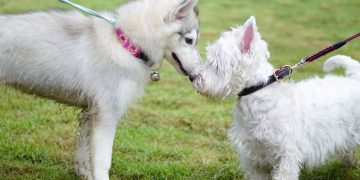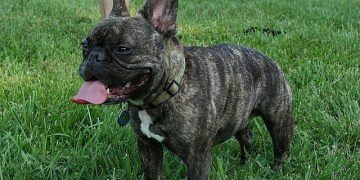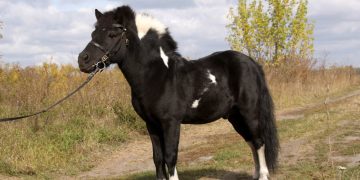Fear aggression is a common behavioral issue in dogs that can be distressing for both pets and their owners. Dogs exhibiting fear aggression often respond to perceived threats with aggressive behaviors as a defensive mechanism, rather than out of dominance or territoriality. Understanding what fear aggression is, its triggers, signs, and treatment options can help pet owners manage and reduce these behaviors, improving the safety and comfort of both dog and owner. This comprehensive guide will explore all you need to know about fear aggression in dogs, including causes, training tips, and prevention methods.
What is Fear Aggression in Dogs?
Fear aggression is a type of aggression that occurs when a dog feels threatened or scared. Unlike other forms of aggression, fear aggression is rooted in a dog’s instinct to protect itself in response to something they perceive as a threat. Dogs experiencing fear aggression may act defensively, using growling, barking, or even biting as a way to create distance between themselves and the perceived danger.
Common Triggers for Fear Aggression in Dogs
Understanding the triggers for fear aggression is essential to managing this behavior. Common triggers include:
- Strangers: Many dogs become aggressive around people they don’t know, especially if they weren’t well socialized as puppies.
- Other Dogs or Animals: Fearful dogs may respond aggressively to other dogs, particularly if they had a negative experience with another animal in the past.
- New or Unfamiliar Environments: Dogs may react aggressively in unfamiliar settings, such as the vet’s office, a new park, or during car rides.
- Sudden Movements or Loud Noises: Sounds like fireworks, thunderstorms, or sudden loud movements can scare some dogs, triggering a fear-based aggressive response.
- Past Trauma or Abuse: Dogs that have experienced abuse or trauma may exhibit fear aggression as a protective response.
- Protective Instincts: Some dogs show fear aggression when they feel the need to protect their space, toys, food, or family members.
Recognizing Signs of Fear Aggression in Dogs
Identifying fear aggression can be challenging, as it often involves subtle signs that can quickly escalate to aggressive behaviors. Watch for the following body language and behaviors:
- Tense Body Posture: Dogs with fear aggression may adopt a rigid, tense posture.
- Tail Tucking: When a dog tucks their tail between their legs, it’s a sign they’re feeling fearful.
- Pinned Back Ears: Dogs that are scared will often flatten their ears back against their head.
- Lip Licking or Yawning: These calming signals indicate that a dog is anxious or nervous.
- Growling or Snapping: If the dog feels trapped or cornered, it may growl or snap as a warning sign.
- Avoiding Eye Contact or Looking Away: Dogs feeling threatened often avoid direct eye contact to de-escalate a situation.
- Raised Hackles: Raised fur along the back is a classic sign of fear, arousal, or aggression.
Causes of Fear Aggression in Dogs
Several factors can contribute to the development of fear aggression in dogs. While some dogs may be genetically predisposed to fear-related behaviors, others develop fear aggression due to environmental or social factors.
- Lack of Socialization: Dogs that weren’t exposed to different people, places, or animals as puppies may develop fear aggression because they aren’t accustomed to new experiences.
- Trauma or Negative Experiences: A single traumatic event, like a fight with another dog or a negative experience at the vet, can cause a lasting fear of certain situations or stimuli.
- Genetics and Breed Tendencies: Some breeds may be more prone to fearful behaviors, especially if they are naturally sensitive or skittish.
- Inconsistent Training or Discipline: Dogs that experience inconsistent training may become anxious or confused, leading to fear-related aggression.
- Health Issues: Pain or illness can make dogs more reactive or defensive, increasing the likelihood of fear aggression. Always rule out medical conditions when fear aggression appears suddenly.
Managing and Treating Fear Aggression in Dogs
Managing fear aggression involves patience, consistency, and positive reinforcement. Here’s how to help your dog overcome fear aggression in a safe and effective way:
1. Behavioral Training and Desensitization
Positive Reinforcement: Use treats and praise to reward your dog for calm behavior in the presence of a trigger. This reinforces the idea that staying calm is rewarded.
Desensitization and Counterconditioning: Gradually expose your dog to fear triggers in a controlled and safe way while rewarding calm behavior. For instance, if your dog fears strangers, you can introduce them to people at a distance and gradually decrease the distance as they become more comfortable.
Avoid Punishment: Punishing fear aggression will only increase a dog’s anxiety and worsen the behavior. Instead, focus on rewarding positive behaviors and providing reassurance.
2. Professional Training and Behaviorists
Working with a professional dog trainer or animal behaviorist is often the best approach for managing fear aggression. Certified trainers can assess the triggers and create a tailored behavior modification plan to address the root of the aggression.
3. Medication and Supplements
For severe cases of fear aggression, a veterinarian may recommend anti-anxiety medications or supplements. While medication isn’t a cure, it can help calm a dog, making it easier to work through behavioral training.
- Prescription Medications: These may include anti-anxiety medications such as fluoxetine (Prozac) or trazodone, prescribed by a veterinarian.
- Natural Supplements: Calming supplements like L-theanine, valerian root, or chamomile can help reduce anxiety in some dogs. Always consult a vet before using supplements.
4. Environmental Management
Safe Spaces: Give your dog a designated safe space, like a crate or quiet room, where they can retreat when they feel scared.
Controlled Exposure: Avoid overwhelming situations. If your dog is fearful of other dogs, avoid crowded dog parks and choose quieter areas for walks.
Consistency in Routines: Dogs with fear aggression benefit from a predictable environment and routine. Consistency can help them feel more secure.
Prevention Tips for Fear Aggression in Dogs
Preventing fear aggression is easier than treating it, especially with puppies or newly adopted dogs. Follow these tips to reduce the risk of fear aggression:
- Early Socialization: Expose puppies to various environments, people, animals, and experiences. This helps them develop confidence and reduces the likelihood of fear-based aggression later in life.
- Use Positive Reinforcement Training: Teach your dog that good behavior is rewarded. This builds trust and strengthens your bond, making them more likely to look to you for reassurance.
- Provide Mental and Physical Stimulation: Dogs need mental and physical exercise to reduce stress and keep them from becoming anxious or fearful.
- Avoid Overwhelming Situations: Gradually introduce new experiences at a comfortable pace for your dog. Avoid pushing them into situations that may be too overwhelming.
- Monitor Body Language: Watch for signs of fear, such as tail tucking or lip licking, and remove your dog from situations before fear escalates into aggression.
Frequently Asked Questions (FAQs)
1. Is fear aggression common in dogs?
Yes, fear aggression is relatively common and can occur in any breed or age of dog. However, it’s more prevalent in dogs that haven’t been socialized properly or have experienced past trauma.
2. Can fear aggression in dogs be cured?
While fear aggression may not be entirely “cured,” it can be managed effectively through consistent training, desensitization, and behavioral modification techniques.
3. What should I do if my dog becomes aggressive out of fear?
Avoid punishing your dog, as this can increase their fear. Instead, calmly remove them from the situation and provide reassurance. Consult a professional trainer for long-term solutions.
4. Can older dogs develop fear aggression?
Yes, older dogs can develop fear aggression, especially if they experience a traumatic event or develop health issues that cause them to feel vulnerable.
5. Are some dog breeds more prone to fear aggression?
Certain breeds with a naturally cautious temperament, such as Border Collies or Shiba Inus, may be more prone to fear aggression, though any dog can develop this behavior.
When to Consult a Veterinarian or Behaviorist
If your dog’s fear aggression is severe, or if it suddenly appears without any prior history, consult a veterinarian to rule out medical causes. A professional behaviorist can also provide guidance for creating an effective, individualized training plan to help manage your dog’s fear aggression safely and effectively.
Conclusion
Managing fear aggression in dogs requires patience, understanding, and a commitment to consistent, positive training methods. By recognizing the signs, avoiding punishment, and creating a structured environment, you can help your dog feel more confident and secure. Remember, working with a professional trainer or behaviorist can make a significant difference in managing fear aggression, ensuring a better quality of life for both you and your dog. With time and effort, it’s possible to reduce fear aggression and build a stronger, more trusting bond with your pet.

























